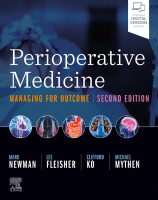Physical Address
304 North Cardinal St.
Dorchester Center, MA 02124

You’re Reading a Preview Become a Clinical Tree membership for Full access and enjoy Unlimited articles Become membership If you are a member. Log in here

Worldwide more than 200 million surgeries are performed each year; in the United States more than 50 million inpatient procedures occur annually. In 2009, the World Health Organization demonstrated that implementation of a relatively simple day-of-surgery checklist was associated with…

Introduction: Rising Demand and Resource Constraint One of the few constants throughout health-care is an inexorable rise in demand. This rise has been ongoing for many years and is driven by several factors. Across the decades, as health-care has advanced,…

“Wherever we see systematic measurement of results in health-care–no matter what the country–we see those results improve.” Michael E. Porter, Harvard Business Review (October 2013) Extensive evidence exists demonstrating that health-care is plagued with overutilization of inappropriate services, underutilization of…

The goal of this chapter is to make the following points: 1. Taxpayers, employers, and employees demand that medicine deliver better value. Physicians need evidence-based medicine to establish which interventions are truly beneficial and modern management techniques to implement those…

Defining Palliative Care Palliative care is defined by the World Health Organization as “an approach that improves the quality of life of patients and their families facing the problem associated with life-threatening illness, through the prevention and relief of suffering…

Introduction Since the inception of anesthesia changed and expanded surgery, some patients have experienced changes in cognitive function postoperatively. Elderly patients are at higher risk of these changes in neurocognitive function, probably because of reduced cognitive reserve and increased cerebral…

The Growth of Unidimensional Pain Assessment Tools A subjective and personal experience, pain remains difficult to quantify within the confines of empirically based medical tradition. Regardless of this challenge, however, management still necessitates accurate and timely assessment, particularly in the…

Introduction Perioperative electrolyte and endocrine disorders are dealt with by anesthesiologists on a daily basis. With the rising incidence of diabetes and obesity and their relation to increased morbidity in the perioperative period, it is imperative that clinicians are skilled…

Definition Respiratory failure occurs when the lungs fail to oxygenate the arterial blood adequately and/or fail to prevent carbon dioxide retention. Although the definition does not contain any absolute values, an arterial O 2 of less than 60 mmHg and…